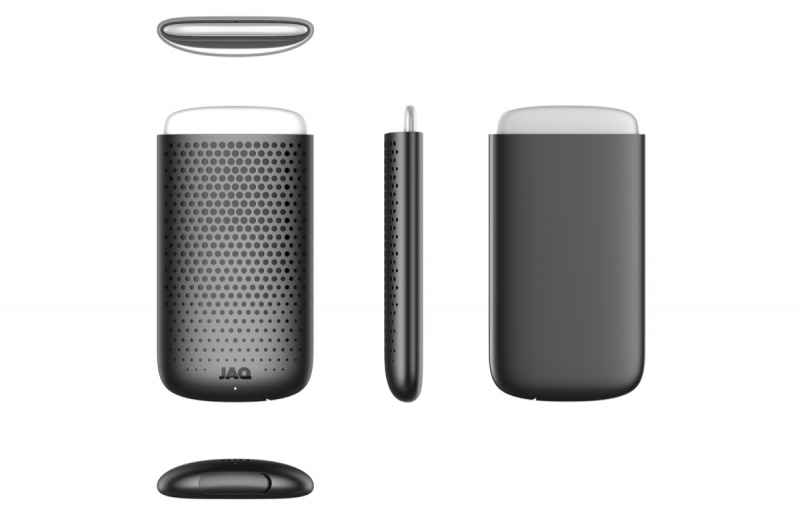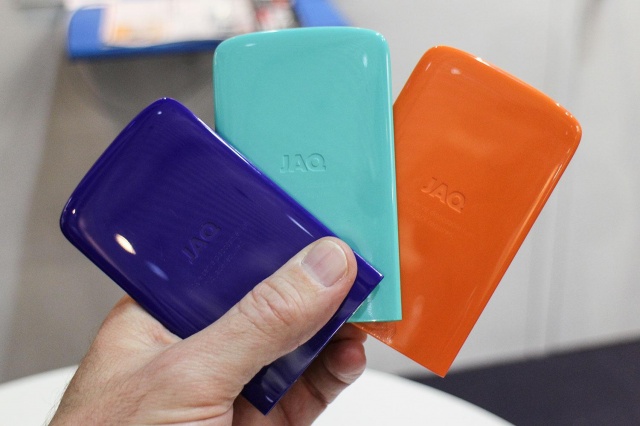It is widely known that the biggest issue concerning smartphones is battery life. With all the technology that smartphones are capable of, batteries haven’t improved too much. So what is to be done then? Removable batteries are slowly getting out of style thanks to the unibody design, wireless charging is still under some uncertainty whether it will really take off or not, and external and rechargeable solutions are either too bulky or generally unpleasant looking. There are some alternatives to external charges but these are only but a few of any note. So what solution is there? What about a fuel cell? Fuel cells are generally great because unlike batteries they can produce electricity continuously as long as there is a permanent source of fuel and oxygen or air needed to sustain the chemical reaction. One problem with fuel cells though is that they are bulky, big and cumbersome.
To fix this, a product from a Swedish company named MyFC emerges and is quite promising to say the least. The device’s name is JAQ and is a credit card-sized fuel cell with water and salt inside and as said, it is meant to charge your smartphone. Its design is I dare say beautiful, the device being encased in a good looking metal pouch which you can slip into it a thin plastic fuel cell that triggers the chemical reaction which produces the needed power. A fuel cell such as this is good enough for a single charge, delivering a 2,400 mAh and this makes it more than enough to charge almost any smartphone. I’m thinking mostly of iPhone 5S which will charge it in 30-40 minutes and iPhone 6 in comparison will be charged within the hour. This is good news since this means that no more waiting around for the phone to be fully charged. But there is also a catch with all this and it’s up to you whether you’re ok with it or not: the moment you stick a cartridge in you have about 1-2 hours to start charging your device before the battery loses juice.

Salt and water rechargeable fuel cell is one good looking battery
Looking on the bright side, this is a green-enough alternative to the energy issue, the cells being made from recycled plastic with only just a hint of conventional metal stuffed in there. Vastly different from hydrogen fuel cells, the MyFC JAQ fuel cell isn’t filled with flammable substances that you need to refill. As for the used cartridges, MyFC is working on a way to return the depleted cells for recycling and all this in the name of ecology. This technology has been available for some time but insufficiently refined so there were some obstacles to overcome. The company managed to produce some very slim and light fuel cells with a higher energy density than conventional fuels such as gasoline. They are guaranteed to work for at least a year or two after you buy them. MyFC together with the help of specialised design agency Aruliden has come up with this stylish and typically minimalistic Scandinavian design for the JAQ and is quite striking.
Where does the name JAQ come from though? It’s a pretty unusual name for a device, be it external battery or otherwise. So, JAQ comes from the fact that you’re not required to plug in and charge this device, you know with a jack, each device being packed with a standard USB to Micro USB cable for connecting either your smartphone or slate/tablet. Available in three different colours and you’re let with the option to match them at your leisure the colours for the fuel cells. Is it safe to say that the fuel cell has been improved upon enough to actually stand as a practical solution? There is certainly an alternative direction the fuel cell has opposed to the more conventional chargers and batteries, but have we reached this new stage yet? Maybe MyFC has found the answer to this with JAQ. The company is in talks with various carriers to bring the JAQ along with the refill cartridges in stores making them available for the general public.

JAQ is a type of external battery rarely seen on the market
The device will also be available to be purchased online with the possibility of shipping it anywhere in the world. There is no word on the pricing at the moment but it is thought that it will revolve somewhere around $75 a pack minus the shipping, and each individual fuel cell costs $1. And what does a pack consists of? The JAQ, of course, five fuel cells for starters, and a charging cable. If all the card stack up well for the Swedish company, expect to see the JAQ to be on sale before the year is out. But before that, check it here.
